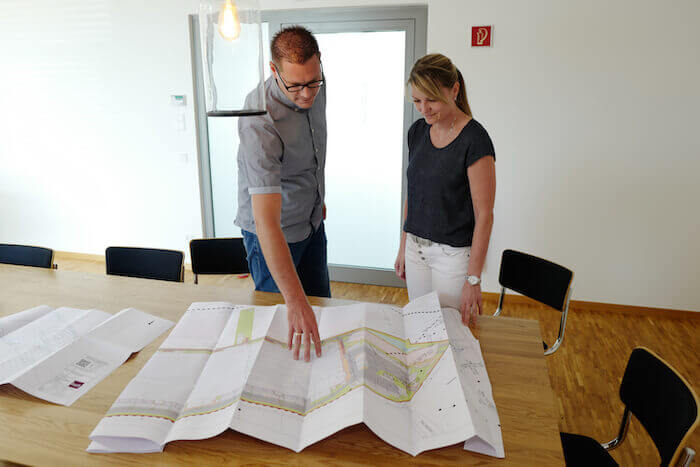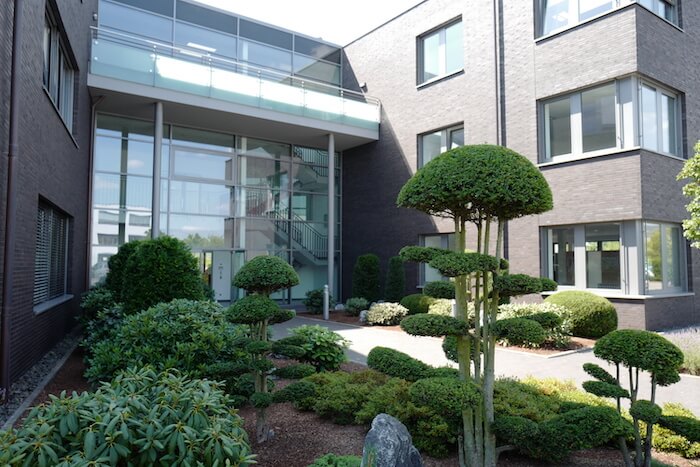Calculating rental space for commercially used /leased buildings and retail spaces (MF/G, MF/V)
Commercial rental space (MF/G)
A guideline has become established and is generally accepted for calculating the rental space in commercial properties (in Germany known under the abbreviation MF/G). The guideline has been developed by the Society of Property Researchers, Germany (Gesellschaft für Immobilienwirtschaftliche Forschung e. V. (gif e.V.))
Retail rental space (MF/V)
The MF/V guideline of the Society of Property Researchers is used for calculating sales areas for retail businesses. These calculations are mainly prepared and used in connection with official approval processes for planning and construction authorities.
Calculating rental space for commercially used /leased buildings and retail spaces (MF/G, MF/V)
Calculating living space in accordance with DIN 227
According to DIN 227, the so called gross floor area is divided into the net floor area and the construction floor area (portions of the gross floor area taken up by walls and other structural elements). The net floor area is divided into the usable areas, the access areas and the technical functional areas. The construction floor area includes all vertical construction elements and the floor area that they occupy. These include, for example, supports, accessible shafts, chimneys, niches and door openings.
The usable floor area is the portion of the gross floor area that the business operator can use for the operation of the company. A distinction is made between various areas of use: living and residential, production, experimental, office work, storage, sales, education, culture, medical treatment and care.
The term “technical functional areas” refers to spaces used for equipment such as ventilation systems, heating systems or air conditioning systems, i.e. mainly for space devoted to the central building services. Access areas refer to spaces such as stairwells and escape routes and thus to all areas that serve to give access to the building.
MF/G – The guideline for calculating rental space for commercial purposes
The MF/G guideline includes the regulations for calculating rental space for commercial properties and for office properties. This is based on the gross floor area as specified in DIN 227. The guideline has been developed by the Society of Property Researchers, Germany (Gesellschaft für Immobilienwirtschaftliche Forschung e. V. (gif e.V.))
Floor space is measured directly at the floor level, whereby baseboards, facing formwork not at ceiling height and other fittings are not included. For curtain walling with supporting profiles that come to the floor level and are horizontal, measurements are taken from the inner side of the glazing. The designation of the spaces is calculated on the basis of the measurements and is based on plans and CAD files. Depending on the situation of the rental, a sectional division of the space may be advisable. The commonly used spaces are divided among the participating tenants based on their respective situations and allocations of the space.
The rental space is divided between commonly used space and space used exclusively by a given tenant. Rental space includes office space, auxiliary rooms, usage areas such as toilets, entryways and corridors as well as other access areas. Excluded from rental space are areas such as shafts, chimneys, technical functional rooms or staircases.
Any areas with a ceiling height of up 1.5 meters are to be designated separately. The individual types of space are to be shown graphically in the rental space plans and in the rental space calculation tables.
MF/V – The guideline for calculating sales space for retail purposes
The MF/V guideline has also been developed by the Society of Property Researchers on the basis of DIN 227. It regulates the calculation of sales space for retail purposes.
The basic idea of the guideline is that the space actually used for selling purposes only constitutes a certain portion of the overall rental space as part of that space is also needed for the storage of goods, for example. On the basis of this assumption, the MF/V (rental space for sales) correlates closely with the MF/G (rental space for commercial purposes) which is also used for calculating rental spaces.
Retail sales refers mainly to businesses that provide and sell goods for private households. The sale of goods must be the main activity of such a business.

